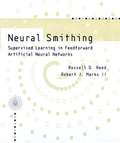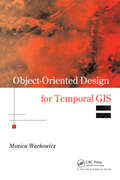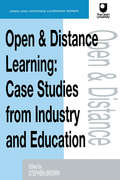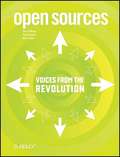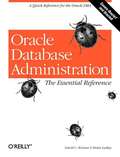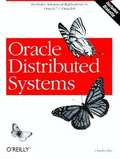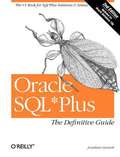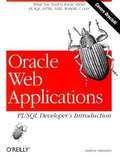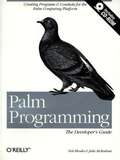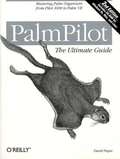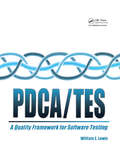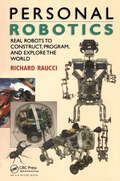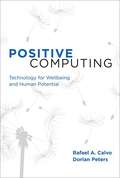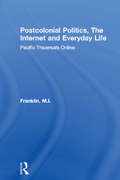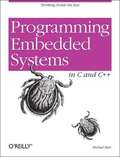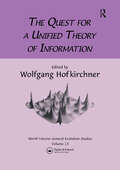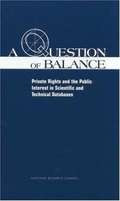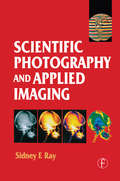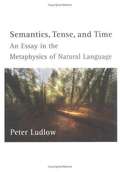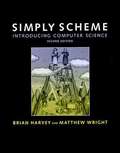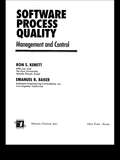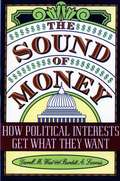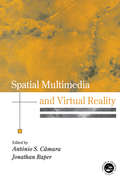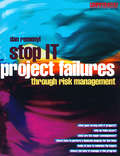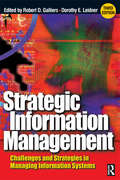- Table View
- List View
Neural Smithing: Supervised Learning in Feedforward Artificial Neural Networks
by Russell D. Reed Robert J. MarksArtificial neural networks are nonlinear mapping systems whose structure is loosely based on principles observed in the nervous systems of humans and animals. The basic idea is that massive systems of simple units linked together in appropriate ways can generate many complex and interesting behaviors. This book focuses on the subset of feedforward artificial neural networks called multilayer perceptrons (MLP). These are the mostly widely used neural networks, with applications as diverse as finance (forecasting), manufacturing (process control), and science (speech and image recognition). This book presents an extensive and practical overview of almost every aspect of MLP methodology, progressing from an initial discussion of what MLPs are and how they might be used to an in-depth examination of technical factors affecting performance. The book can be used as a tool kit by readers interested in applying networks to specific problems, yet it also presents theory and references outlining the last ten years of MLP research.
Object-Oriented Design for Temporal GIS
by Monica WachowiczThere has been an increasing demand in GIS for systems that support historical data: time-series data as well as mobility information. From a modelling perspective, there are advantages in integrating object-oriented analysis and design to databases as well as to visualisation capabilities of GIS.Object-Oriented Design for Temporal GIS explores
Open and Distance Learning: Case Studies from Education Industry and Commerce (Open And Distance Learning Ser.)
by Stephen BrownThis contributed volume reviews the lessons that may be learned from trying to integrate distance learning strategies with face-to-face teaching methods. It contains practical examples from education, commerce and industry.
Open Sources: Voices from the Open Source Revolution
by Chris Dibona Mark Stone Sam Ockman Open Source Organization Brian Behlendorf Scott Bradner Jim Hamerly Kirk Mckusick Tim O'Reilly Tom Paquin Bruce Perens Eric S. Raymond Richard Stallman Michael Tiemann Linus Torvalds Paul Vixie Larry Wall Bob YoungThrough essays that explain how the movement works, why it succeeds, and where it is going. A powerful vision from the movement's spiritual leaders, this book reveals the mysteries of how open development builds better software and how businesses can leverage freely available software for a competitive business advantage.
Oracle Database Administration, The Essential Reference
by David C. Kreines Brian LaskeyA concise reference to the enormous store of information Oracle8 or Oracle7 DBAs need every day, Oracle Database Administrationcovers DBA tasks like installation, tuning, backups, networking, auditing, and query optimization. It's also a set of quick references on initialization parameters, SQL statements, data dictionary tables, system privileges, roles, and syntax for SQL*Plus, Export, Import, and SQL*Loader.
Oracle Distributed Systems
by Charles DyeThis book describes how you can use multiple databases and both Oracle8 and Oracle7 distributed system features to best advantage. It covers design, configuration of SQL*Net/Net8, security, and Oracle's distributed options (advanced replication, snapshots, multi-master replication, updateable snapshots, procedural replication, and conflict resolution). Includes a complete API reference for built-in packages and a diskette with many helpful scripts and utilities.
Oracle SQL*Plus: The Definitive Guide, 2nd Edition
by Jonathan GennickDespite its wide availability and usage, few developers and DBAs have mastered the true power of Oracle SQL*Plus. This bestselling book--now updated for Oracle 10g--is the only in-depth guide to this interactive query tool for writing SQL scripts. It's an essential resource for any Oracle user. The new second edition of Oracle SQL*Plus: The Definitive Guide clearly describes how to perform, step-by-step, all of the tasks that Oracle developers and DBAs want to perform with SQL*Plus--and maybe some you didn't realize you could perform. With Oracle SQL*Plus: The Definitive Guide , you'll expertly: write and execute script files generate ad hoc reports extract data from the database query the data dictionary tables customize an SQL*Plus environment and much more It also includes a handy quick reference to all of its syntax options and an often-requested chapter on SQL itself, along with a clear, concise, and complete introduction. This book is truly the definitive guide to SQL*Plus. It's an indispensable resource for those who are new to SQL*Plus, a task-oriented learning tool for those who are already using it, and an immediately useful quick reference for every user. If you want to leverage the full power and flexibility of this popular Oracle tool, you'll need this book.
Oracle Web Applications: PL/SQL Developer's Introduction
by Andrew OdewahnThis book is an easy-to-understand guide to building Oracle8i (Oracle's "Internet database") Web applications using a variety of tools -- PL/SQL, HTML, XML, WebDB, and Oracle Application Server (OAS). It also covers the packages in the PL/SQL toolkit and demonstrates several fully realized Web applications. This book provides the jump-start you need to extend relational concepts to Web content and to make the transition from traditional programming to the development of useful Web applications for Oracle8i.
Palm Programming: The Developer's Guide
by Neil Rhodes Julie MckeehanPalmPilot's popularity is growing and with over a million units sold, the Palm OS dominates the hand-held market. Wired has astutely described Palm's position in a recent article: "On its way to becoming the bestselling hand-held computer of all time, the 3Com PalmPilot has spawned an intense, emotional, and fanatical developer following not seen since the glory days of the Mac." (Wired, 20 Feb. 98). Palm Programming should be eagerly accepted by programmers because the authors worked closely with Palm to ensure that the book is tailored exactly to the needs of the ever-growing group of Palm developers. As nothing but some piecemeal documentation exists currently, this book provides a much needed solution to the Palm developers. In fact, Palm uses this book as their official developer's guide and will be using it in the future as a key part of their training materials for developers. There are currently no books on Palm programming (and we know of none that are planned). The only way to learn is by using the reference material published by Palm (available freely on their Web site), the tutorial they provide, or various Palm programming FAQs compiled by third parties. Palm Programming shows intermediate to experienced C programmers how to build a Palm application from the ground up. Using an easy-to- understand tutorial approach, this book gives readers everything necessary to create a wide range of Palm applications and conduits, from simple scripts through full-blown applications, and in the process provides thorough coverage of Palm programming. It includes a CD-ROM (Macintosh and Windows compatible) with the full source code to the examples in the book, a trial version of Palm's Software Development Kit, and third-party developer tools, including Metrowerks' CodeWarrior Lite programming kit. Outline Part 1: Overview of Palm OS and devices Chapter 1: The Palm Solution Chapter 2: Developing for Palm OS Chapter 3: Designing a solution Part 2: Programming for the handheld Chapter 4: Structure of an Application Chapter 5: Forms and Form Objects Chapter 6: Databases Chapter 7: Menus Chapter 8: Extras Chapter 9: Communications Chapter 10: Debugging Part 3: Programming for the desktop: conduits Chapter 11: Getting started with conduits Chapter 12: Uploading and Downloading Data Chapter 13: Two-way Syncing Appendix: Where to go from here
PalmPilot: The Ultimate Guide, 2nd Edition
by David PogueThis new edition of O'Reilly's runaway bestseller is densely packed with previously undocumented information. The bible for users of Palm VII and all other Palm models, it delivers hundreds of timesaving tips and surprising tricks, plus an all-new CD-ROM (for Windows 9x, NT, or Macintosh) containing over 3,100 PalmPilot programs from the collection of palmcentral.com, the Internet's largest Palm software site.
PDCA/Test
by William LewisMost manuals assume software testing is being performed as part of a well-defined, structured development cycle based on clearly stated requirements and standards. Unfortunately, this is not often the case in the real world. Indeed, the one true constant in software development is change.PDCA/TEST presents a continuous quality framework bas
Personal Robotics: Real Robots to Construct, Program, and Explore the World
by Richard RaucciMany companies are now offering robots that are geared to the casual electronics hobbyist, both in kit form and as fully assembled models. This book gives an overview of available robot products, ranging from the simple to the complex. Interested readers will be able to find the robot kit that matches their skill level and pocketbook. Beginners may want to try a robot that is already fully assembled, or a kit with pre-assembled electronics. Other readers may opt for kits that require soldering and electronic experience. Other criteria a reader will be able to review include motion systems (robots that roll on wheels, or walk on legs, or robot arms), available sensors (from none to a wide range), and programming complexity (how the robot is programmed). If its not really a robot, its not in this book.
Positive Computing
by Dorian Peters Rafael A. CalvoOn the eve of Google's IPO in 2004, Larry Page and Sergey Brin vowed not to be evil. Today, a growing number of technologists would go further, trying to ensure that their work actively improves people's lives. Technology, so pervasive and ubiquitous, has the capacity to increase stress and suffering; but it also has the less-heralded potential to improve the well-being of individuals, society, and the planet. In this book, Rafael Calvo and Dorian Peters investigate what they term "positive computing" -- the design and development of technology to support psychological well-being and human potential. Calvo and Peters explain that technologists' growing interest in social good is part of a larger public concern about how our digital experience affects our emotions and our quality of life -- which itself reflects an emerging focus on humanistic values in many different disciplines. Synthesizing theory, knowledge, and empirical methodologies from a variety of fields, they offer a rigorous and coherent foundational framework for positive computing. Sidebars by experts from psychology, neuroscience, human--computer interaction, and other disciplines supply essential context. Calvo and Peters examine specific well-being factors, including positive emotions, self-awareness, mindfulness, empathy, and compassion, and explore how technology can support these factors. Finally, they offer suggestions for future research and funding.SidebarsTimothy N. Bickmore, Jeremy Bailenson, danah boyd, Jane Burns, David R. Caruso, Mihaly Csikszentmihalyi, Felicia Huppert, Mary-Helen Immordino-Yang, Adele Krusche and J. Mark G. Williams, Jane McGonigal, Jonathan Nicholas, Don Norman, Yvonne Rogers
Postcolonial Politics, The Internet and Everyday Life: Pacific Traversals Online (Routledge Advances in International Relations and Global Politics)
by M.I. FranklinIn this ground-breaking study M.I. Franklin explores the form and substance of everyday life online from a critical postcolonial perspective. With Internet access and social media uses accelerating in the Global South, in-depth studies of just how non-western communities, at home and living abroad, actually use the Internet and web-based media are still relatively few. This book’s pioneering use of virtual ethnography and mixed method research in this study of a longstanding ‘media diaspora’ incorporates online participant-observation with offline fieldwork to explore how postcolonial diasporas from the south Pacific have been using the Internet since the early ways of the web. Through a critical reconsideration of the work of Michel de Certeau in light of postcolonial and feminist theories, the book provides insights into the practice of everyday life in a global and digital age by non-western participants online and offline. Critical of techno- and media-centric analyses of cyberspatial practices and power hierarchies, Franklin argues that a closer look at the content and communicative styles of these contemporary Pacific traversals suggest other Internet futures. These are visions of social media that can be more hospitable, culturally inclusive and economically equitable than those promulgated by both powerful commercial interests and state actors looking to take charge of the Internet ‘after Web 2.0’. The book will be of interest to students of international politics, media and communications, cultural studies, science and technology studies, anthropology and sociology interested in how successive waves of new media interact with shifting power relations at the intersection of politics, culture, and society.
Programming Embedded Systems in C and C++
by Michael BarrThis book introduces embedded systems to C and C++ programmers. Topics include testing memory devices, writing and erasing Flash memory, verifying nonvolatile memory contents, controlling on-chip peripherals, device driver design and implementation, optimizing embedded code for size and speed, and making the most of C++ without a performance penalty.
Quest For A Unified Theory: Proceedings Of The Second International Conference On The Foundations Of Information Science
by Wolfgang HofkirchnerFirst published in 1999. Volume 13 in the 13-volume set titled World Futures General Evolution Studies with a common focus of the emerging field of general evolutionary theory. This volume will expand across disciplines where scholars from new fields will contribute books that propose general evolution theory in novel contexts. The essays are structured with five topics: Approaches to Unification; Concepts of Information; Self-Organizing Systems; Life and Consciousness; Society and Technology.
A Question of Balance: Private Rights and the Public Interest in Scientific and Technical Databases
by Committee for a Study on Promoting Access to Scientific Technical Data for the Public InterestNew legal approaches, such as the European Union's 1996 Directive on the Legal Protection of Databases, and other legal initiatives now being considered in the United States at the federal and state level, are threatening to compromise public access to scientific and technical data available through computerized databases. Lawmakers are struggling to strike an appropriate balance between the rights of database rights holders, who are concerned about possible commercial misappropriation of their products, and public-interest users of the data such as researchers, educators, and libraries.A Question of Balance examines this balancing act. The committee concludes that because database rights holders already enjoy significant legal, technical, and market-based protections, the need for statutory protection has not been sufficiently substantiated. Nevertheless, although the committee opposes the creation of any strong new protective measures, it recognizes that some additional limits against wholesale misappropriation of databases may be necessary. In particular, a new, properly scoped and focused U.S. statute might provide a reasonable alternative to the European Union's highly protectionistic database directive. Such legislation could then serve as a legal model for an international treaty in this area. The book recommends a number of guiding principles for such possible legislation, as well as related policy actions for the administration.
Scientific Photography and Applied Imaging
by Sidney RayWINNER OF THE 2001 KRASZNA-KRAUSZ PHOTOGRAPHY BOOK AWARD (Technical Photography category)The only definitive book to fully encompass the use of photography and imaging as tools in science, technology and medicine. It describes in one single volume the basic theory, techniques, materials, special equipment and applications for a wide variety of uses of photography, including: close up photography and photomacrography to spectral recording, surveillance systems, radiography and micro-imaging. This extensively illustrated photography 'bible' contains all the information you need, whether you are a scientist wishing to use photography for a specialist application, a professional needing to extend technical expertise, or a student wanting to broaden your knowledge of the applications of photography.The contents are arranged in three sections:· General Section, detailing the elements of the image capture process· Major Applications, describing the major applications of imaging · Specialist Applications, presenting an eclectic selection of more specialised but increasingly important applicationsEach subject is introduced with an outline of its development and contemporary importance, followed by explanations of essential theory and an overview of techniques and equipment. Mathematics is only used where necessary. Numerous applications and case studies are described. Comprehensive bibliographies and references are provided for further study.
Semantics, Tense, and Time: An Essay in the Metaphysics of Natural Language
by Peter LudlowOne of the central goals of this book is to illustrate how one can study metaphysical questions from a linguistic/semantical perspective. The specific issue that the author has chosen to investigate is the well-entrenched dispute between A-theorists and B-theorists about the nature of time.
Simply Scheme: Introducing Computer Science (2nd edition)
by Brian Harvey Matthew WrightA textbook for the introductory computer science course, using Scheme instead of a more traditional programming language. The primary goal in Parts I-V is preparation for the Scheme-based Structure and Interpretation of Computer Programs, while the focus of Part VI is to connect the course with the kinds of programming used in "real world" application programs like spreadsheets and databases. A PC or Macintosh diskette is available. Annotation c. by Book News, Inc. , Portland, Or.
Software Process Quality: Management and Control
by Ron S. Kenett Emanuel BakerUsing actual examples of software process improvement from the private sector and government, this work demonstrates how quality systems, measurement techniques and performance evaluations work. It presents a methodology for analyzing an ongoing software development process and establishing a rational plan for process improvement.
The Sound of Money: How Political Interests Get What They Want
by Darrell M. West Burdett A. LoomisIn their compelling new book, The Sound of Money: How Political Interests Get What They Want, West and Loomis probe the connection between interest-group spending and congressional policy making. In recent years, important battles have been fought over health care reform, telecommunications deregulation, and Medicare, to name just a few. The interest groups most successful at influencing policy are those with the most money to spend on advertising and lobbying. West and Loomis caution that as the "sound" of money in American politics grows louder, this new group activism will increasingly affect-and maybe even threaten-the viability of representative government.
Spatial Multimedia and Virtual Reality
by Antonio S. CamaraThe intersection of two disciplines and technologies which have become mature academic research topics in the 1990s was destined to be a dynamic area for collaboration and publication. However, until now no significant book-length treatment of the meeting of GIS and Virtual Reality has been available. This volume puts that situation to rights by bringing these together to cement some common understanding and principles in a potentially highly promising area for technological collaboration and cross-fertilisation. The result is a volume which ranges in subject matter from studies of a Virtual GIS Room to Spatial Agents, and from an Environmental Multimedia System to Computer-Assisted 3D Geographic Education. All the contributors are well-known international scientists, principally from the computational side of GIS. It will be a valuable resource for any GIS researcher or professional looking to understand the leading edge of this fertile field.
Stop IT Project Failures
by Dan RemenyiThis book is about information systems development failures and how to avoid them. It considers what goes wrong with information systems development projects and what actions may be taken to avoid potential difficulties.The reduction of the impact,or even the elimination of the problems,is discussed in terms of an information systems risk management programme.Stop I.T.Project failure helps to ensure that IS project managers are successful in helping to deliver application systems. However, IS development risk can never be entirely eliminated and consequently the practitioner needs to bear in mind that an IS development project is never without risk, and hence there is a continuing potential for something to go wrong.The book covers the key issues and variables and makes specific practical suggestions about the good management practice that is required to implement IS project risk processes. Dr. Dan Remenyi has spent more than 25 years working in the field of corporate computers and information systems. He has worked with computers as an IS professional, business consultant and user. In all these capacities he has been primarily concerned with benefit realisation and obtaining the maximum value for money from the organisations' information systems investment and effort. He has worked extensively in the field of information systems project management, specialising in the area of project risk identification and management. He has written a number of books and papers in the field of IT management and regularly conducts courses and seminars as well as working as a consultant in this area. Dr.Dan Remenyi holds a B.Soc.Sc., an MBA and a PhD. He is a Visiting Professor at Chalmers University of Technology in Gothenberg, Sweden and an associate member of faculty at Henley Management College in the United Kingdom.
Strategic Information Management: Challenges And Strategies In Managing Information Systems (Management Reader Ser.)
by Robert D. Galliers Dorothy E Leidner'Strategic Information Management' has been completely up-dated to reflect the rapid changes in IT and the business environment since the publication of the second edition. Half of the readings in the book have been replaced to address current issues and the latest thinking in Information Management. It goes without saying that Information technology has had a major impact on individuals, organizations and society over the past 50 years or so. There are few organizations that can afford to ignore IT and few individuals who would prefer to be without it. As managerial tasks become more complex, so the nature of the requiredinformation systems (IS) changes - from structured, routine support to ad hoc, unstructured, complex enquiries at the highest levels of management.As with the first and second editions, this third edition of 'Strategic Information Management: Challenges and strategies in managing informationsystems' aims to present the many complex and inter-related issues associated with the management of information systems. The book provides a rich source of material reflecting recent thinking on the key issues facing executives in information systems management. It draws from a wide range of contemporary articles written by leading experts from North America and Europe.'Strategic Information Management' is designed as a course text for MBA, Master's level students and senior undergraduate students taking courses in information management. It provides a wealth of information and references for researchers in addition.
